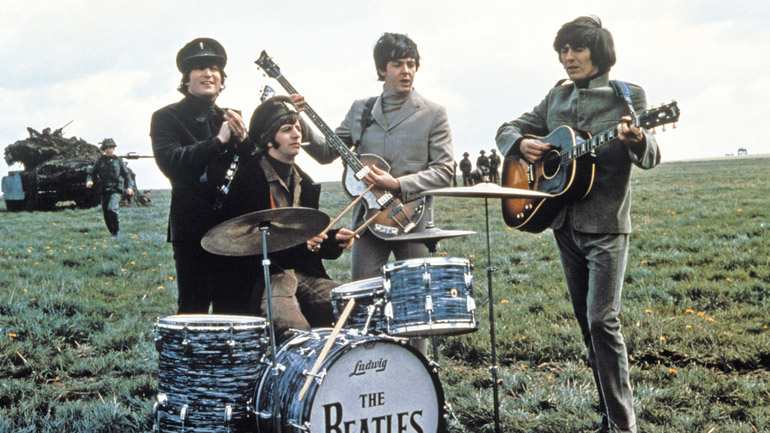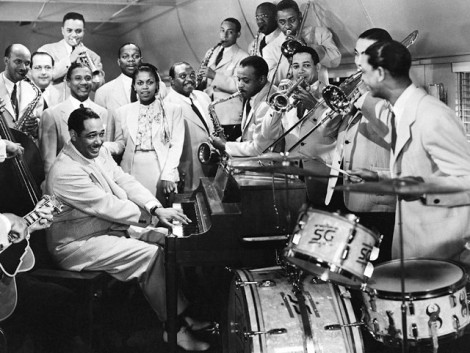
Videos by American Songwriter
That is the question I’d like to ponder in this blog post. From my point of view, there’s no debate: You should—nay, you must—learn how to read music, especially if you want to get the most out of “Compose Yourself” (my book on the ABCs of Songwriting, which is being serialized in its entirety here, in conjunction with video lessons on YouTube). But there are other reasons, too. Lots of them. Maybe you want to play with other musicians. If they know how to read music and you don’t, it’s going to slow things down. It may even prevent you from joining the band altogether. Maybe you’d like to read the scores to the songs by The Beatles (and others) that I use as examples in “Measure for Measure” (my column). It would certainly enhance your enjoyment and understanding—no two ways about it. Maybe you’d like to land a few studio gigs. Everyone’s going to be working from a lead sheet at the very least. They have to if they want to stay in sync. And if it comes to a toss-up between you and another musician who reads music, which way do you think the coin is going to flip? And maybe you’ve been wanting to learn how to read music, but you just haven’t had the time. A lot of folks are in that position.
When I was in college, I took a course in bartending one summer. The teacher was a philosophy professor who had moonlighted as a bartender for years, and while I forget the formula for a Manhattan, there’s one thing he said that I will never forget: “Words were invented so you don’t have to carry a brick around with you in order to tell someone about a brick.” The same might be said about musical notation. It allows you to carry a tune, without carrying a guitar with you at all times.
That’s why I’m supplementing the content of Excerpt 1 with video lessons that show you how to read all the musical notation used in the book, with special emphasis on sight-reading for guitar. This constitutes a separate, parallel course in basic musicianship. (To get a free PDF of Excerpt 1, simply e-mail info@americansongwriter.com and writing “Request ‘Compose Yourself’ Excerpt 1” in the Subject field.) So, why not learn now? I promise to make it as painless as possible.
At the same time, I’m acutely aware that some musicians, many of them very fine artists indeed, are downright hostile to sight-reading. I could tell you stories… In the early days of Guitar Player magazine, for example, a decision had to be made whether or not to write the musical examples in standard notation or not. It wasn’t easy. Critics of the idea said that guitar players were musically illiterate and proud of it, and they would never buy the magazine if they saw musical notes when they fanned the pages. Guitar tab was all they needed or wanted. Using notation would place an extra burden on them that they would never be willing to meet. But publishers Jim Crockett and Don Menn had faith in the audience and decided in favor of the five-line staff. Believe it or not, that was a bold, groundbreaking move, and a giant risk. But their decision turned out to be the right one. Guitar Player set the pace, and nowadays all the dedicated guitar magazines write their examples in standard notation over a parallel staff of tablature. Some of them use a hybrid of standard rhythmic notation (stems, beams, flags, standard symbols for rests) and tab. Because of the decision taken in the Guitar Player editorial room decades ago, it is not at all uncommon to find guitarists today who are more musically literate than their counterparts in the orchestra by the time they hit high school.
Which brings me to songwriters. There’s a certain subculture in the songwriting world that is reminiscent of the guitar players of yore. They do not read musical notation, and they’re proud of it. Since I’d been an editor for Guitar Player way back in the mid-1970s through the early 1980s, I thought that the to-read-or-not-to-read issue had long ago been laid to rest. But recently I discovered I was wrong. Musical illiteracy still has its advocates.
And here I want to spring a surprise on you: I get it! I understand why some songwriters are hostile to music theory and notation. More than that, I’m even in sympathy with them.
When I began studying music theory as a teenager, I had only one goal—to use it to learn how to write songs. That was because of an early, colossal failure at songwriting a few months into my guitar-playing career, after a friend told me that it was “easy to write those songs like you hear on the radio.” While I was still reeling in shock from my initial failure, a couple of friends (including my guitar teacher, Pete Sessions, author of the brilliant book, The Functions of Chords for Pop, Jazz, and Modern Styles, P&R Press, 2002) told me that music theory was the answer.
So off I went, on a quest for enlightenment via theory. Flash-forward fifteen years: Theory had let me down. I had gone the whole route, from reading musical notation to ear training, though harmony and counterpoint and jazz, from Schenker to Slonimsky, and while I felt musically literate, I did not feel that any of it had improved my songwriting much. In fact, I felt it had almost done the opposite: stifled my creativity altogether. What’s more, I couldn’t point to any great successes among the other students who had gone the same route. My peers who had done the best—in terms of creativity—were the ones who had copied songs off of records, joined a band and played. And many of them were—gasp!—musically illiterate.
So now, when I hear songwriters say, “The Beatles never learned to read music, and they did all right,” I think there’s more truth to that than they know. But I also think it’s wrong to conclude that musical literacy necessarily obstructs your creativity, much less leads to success. The problem is not sight-reading or theory itself; the problem is the way they are usually taught. The theory vs. creativity conflict is a problem I attempted to address in Compose Yourself. The solution? I think there’s a middle way that gets the best of both worlds. We should learn the musical language in the same way we learned English: by using it to communicate first. In Compose Yourself, we do this through dialog games. By putting musical meaning first, musical symbols become more than abstractions, like mathematical symbols. When we can hear them as part of a language, they become as meaningful as the words of a poem.
Be sure to subscribe to my YouTube channel, SongwritingABCs, because the videos will be coming out much faster than the blog. Currently, I am posting videos about sight-reading. The dialog games on rhythm come next.













Leave a Reply
Only members can comment. Become a member. Already a member? Log in.